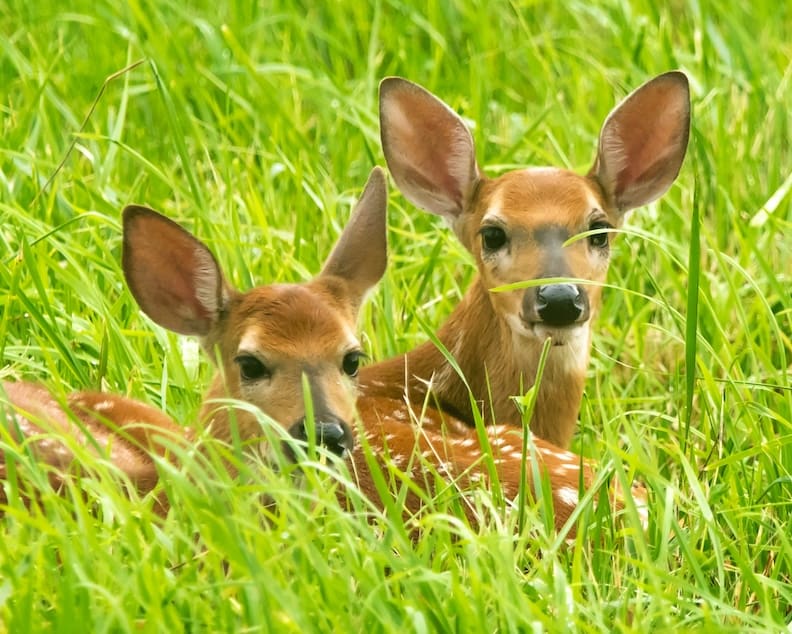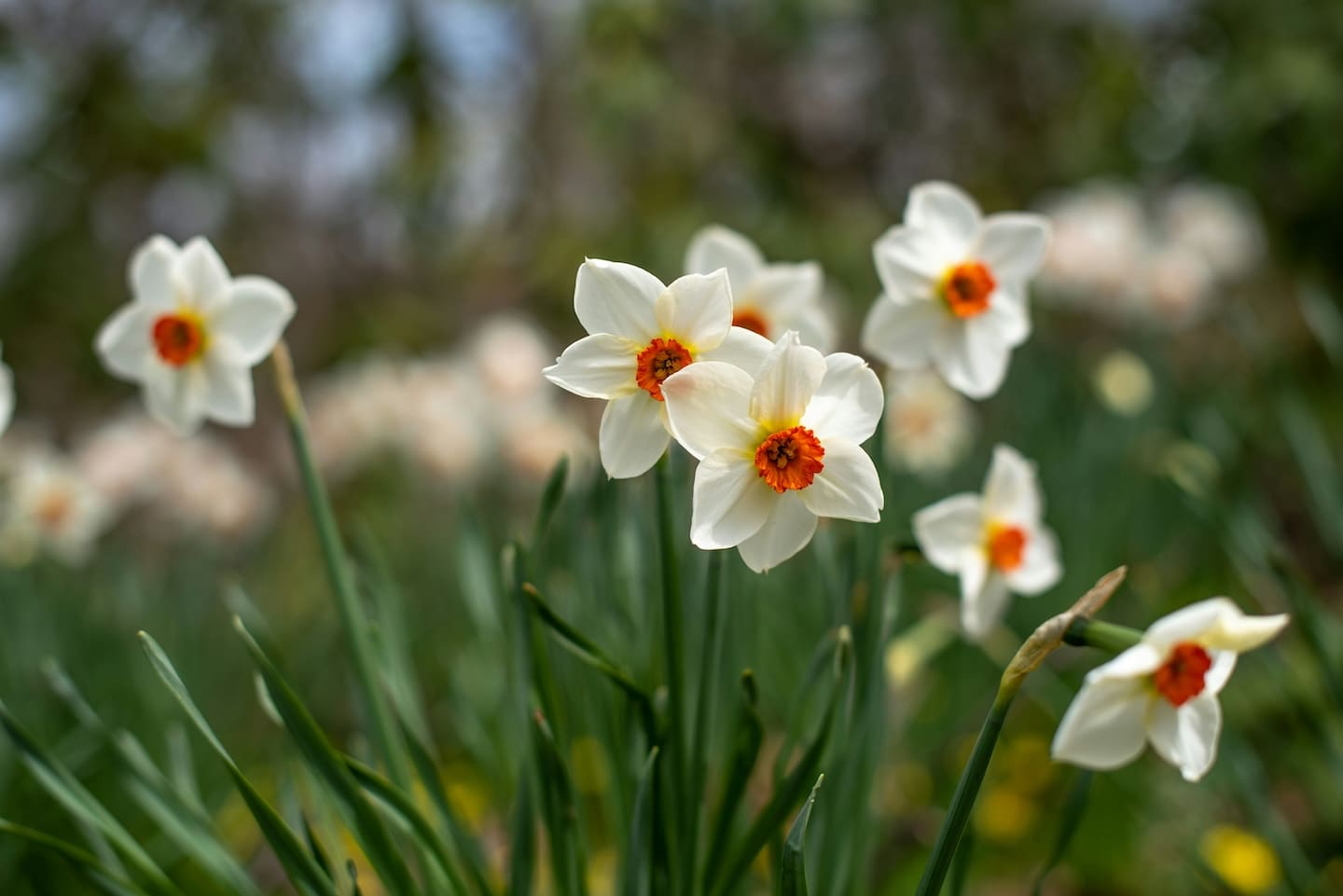 Comprehensive Guide to the Best Garden Deer Deterrents: Protect Your Greenery from Grazing Guests
Comprehensive Guide to the Best Garden Deer Deterrents: Protect Your Greenery from Grazing Guests
Why Deer Deterrents Are Important
If you’re searching for the best garden deer deterrent, you’ll find a range of solutions that can help save your garden from becoming a deer buffet. Deer are beautiful creatures, yet their fondness for your garden’s flourishing plants can devastate your diligent efforts.
Understanding why garden deer deterrents are essential starts with knowing how much damage deer can do. They consume around 6-8 pounds of vegetation daily, quickly turning your vibrant garden into a barren landscape.
Incorporating a mix of these deterrent methods is crucial to protecting your investment and keeping your garden thriving. If you’re tired of seeing your plants decimated, Borst Landscape & Design can help. Our experts offer tailored solutions to safeguard your garden. Call us at (201) 785-9400 or contact us online for a consultation.
Understanding Deer Behavior
Understanding deer behavior is crucial to keeping them from turning your garden into their personal buffet. Let’s delve into what attracts deer to gardens and their feeding patterns.
What Attracts Deer to Gardens
Deer are drawn to gardens for several reasons, primarily the availability of food. Here are some key attractants:
- Favorite Plants: Deer are particularly fond of herbaceous perennials, vegetables, and fruit trees. Plants like tulips, hostas, and roses are often on their menu.
- Seasonal Preferences: In spring, deer are especially attracted to tender new growth and high-protein plants. As seasons change, their preferences might shift, but they generally go for the most nutritious options available.
- Fertilized Plants: Fertilized plants are lush and nutrient-rich, making them particularly appealing to deer. The scent and taste of these plants can be irresistible.
Deer Feeding Patterns
Understanding when and how deer feed can help you better protect your garden:
- Daily Habits: Deer are crepuscular, meaning they are most active during dawn and dusk. They can consume around 6 to 8 pounds of food daily, wreaking havoc on gardens in a short time.
- Seasonal Changes: Deer feeding patterns change with the seasons. In spring and summer, they prefer soft, green plants. In fall and winter, they switch to woody plants and shrubs as other food sources become scarce.
- Impact on Gardens: The impact of deer on gardens can be devastating. A single night of feeding can decimate a bed of flowers or vegetables. They are also known to damage trees by rubbing their antlers against the bark, especially during the fall.
Understanding these behaviors can help you better plan and implement strategies to keep deer at bay.
Ready to fortify your garden against deer? Contact Borst Landscape & Design at (201) 785-9400 for expert advice and customized solutions.
Best Garden Deer Deterrents
When it comes to protecting your garden from deer, there are several effective strategies to consider. Let’s dive into the best garden deer deterrents, including fencing solutions and deer-resistant plants.
Fencing Solutions
Height Requirements:
Deer can jump high, so an eight-foot fence is ideal. However, some people find success with shorter fences, especially if they use other deterrents in combination. A fence that’s at least seven feet tall can be effective if it’s paired with other barriers.
Solid vs. Wire Fencing:
Solid fences, such as those made of wood, provide a visual barrier that can discourage deer from attempting to jump. Wire fencing, on the other hand, is less obtrusive visually but still effective. Electric fencing adds an extra layer of deterrence by delivering a mild shock.
Next, we’ll explore the best deer-resistant plants to keep your garden thriving.
Deer-Resistant Plants
When it comes to protecting your garden, selecting deer-resistant plants can be a game-changer. These plants are less appealing to deer due to their strong scents, fuzzy foliage, or prickly textures. Let’s dive into some of the best options for both flowers and landscape plants.
Best Deer-Resistant Flowers
Daffodils (Narcissus)  Zones: 3-9
Zones: 3-9
Height: 6-30 inches
Sun: Full sun to part shade
Bloom Time: March-April
Daffodils contain poisonous alkaloids, making them unappealing to deer. These early bloomers are perfect for adding a burst of color after a long winter. Plant the bulbs in the fall for a stunning spring display.
Peonies (Paeonia officinalis)
Zones: 3-8
Height: 2.5-3 feet
Sun: Full sun to part shade
Bloom Time: May
Peonies are the queens of spring, and luckily, deer tend to avoid them. Their large, fragrant blooms make them a favorite among gardeners.

Echinacea (Coneflower)
Zones: 4-9
Height: Up to 4 feet
Sun: Full to partial sun
Bloom Time: Varies by variety
Echinacea’s hairy stems and height make it less appealing to deer. These flowers are easy to grow and come in various colors like pink, purple, and yellow. They also have medicinal properties and are a great addition to any garden.
Rudbeckia (Black-Eyed Susan)
Zones: 4-9
Height: 2-3 feet
Sun: Full sun to partial shade
Bloom Time: Late spring to early fall
Rudbeckia’s sandpaper-like texture deters deer, making it a reliable choice for your garden. These flowers are not only beautiful but also low-maintenance.
Best Deer-Resistant Landscape Plants
Agastache (Anise Hyssop)Zones: 5-9
Height: 2-4 feet
Sun: Full sun
Bloom Time: June-September
Agastache blooms all summer and into the fall. Its foul taste deters deer and rabbits, but hummingbirds love it.
Astilbe (Hybrid Astilbe)
Zones: 4-8
Height: 1-4 feet
Sun: Lightly shaded
Astilbe’s fern-like texture makes it unappealing to deer. These plants are low-maintenance and thrive in shaded areas.
Salvia (Meadow Sage) Zones: 4-8
Zones: 4-8
Height: 1-3 feet
Sun: Full sun
Bloom Time: May-September
Salvia attracts butterflies and bees but repels deer. These drought-tolerant plants are easy to grow and add beauty to any garden.
Nepeta (Catmint)
Zones: 4-8
Height: 10-24 inches
Sun: Full sun to afternoon shade
Bloom Time: Early summer through fall Nepeta’s gray-green scented leaves deter deer. This perennial herb grows quickly and is ideal for borders.
Herbs (Lavender, Sage, Thyme, Chives, Tarragon, Mint, Rosemary, Oregano, Parsley)
Zones: Most herbs grow well in zones 3-9
Height: Up to 2 feet
Sun: Full sun to partial shade
Herbs like lavender and rosemary are great for culinary use and as deer repellents. They are hardy and can grow larger with age.
Boxwood (Buxus)
Zones: 4-9
Height: 2-10 feet
Sun: Semi-shade
Boxwoods have a heavenly scent that deer dislike. They are a bit tricky to start but become very resistant once established.
 Hydrangea (Oak Leaf Hydrangea)
Hydrangea (Oak Leaf Hydrangea)
Zones: 5-9
Height: 6-10 feet
Sun: Sun and shade
Bloom Time: May-July
Oak Leaf Hydrangeas are easy to grow and make excellent border plants. They thrive in rich, moist soil and can be planted almost anywhere.
Deer can be a real problem for your garden, but with the right plants and strategies, you can keep them at bay. Deer-resistant plants like daffodils, echinacea, and peonies can make a big difference. Also, consider other landscape plants like caladium, astilbe, and hydrangea.
At Borst Landscape & Design, we specialize in creating beautiful, deer-resistant landscapes that enhance your outdoor space while keeping it safe from deer damage. Our team of experienced landscape designers and certified technicians can guide you through every step, from selecting the right plants to installing physical barriers.
If you’re ready to transform your garden into a deer-free sanctuary, contact Borst Landscape & Design at (201) 785-9400 for expert advice and customized solutions. We are here to help you create a stunning, deer-resistant landscape that you can enjoy year-round.
Photo by Gary Meulemans on Unsplash
Photo by Albulena Panduri on Unsplash
Photo by Annemarie Grudën on Unsplash
Photo by Amber Wolfe on Unsplash
Photo by Simone Dalmeri on Unsplash
